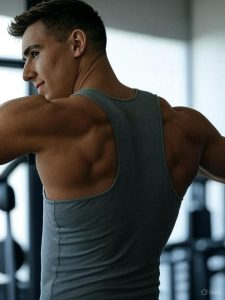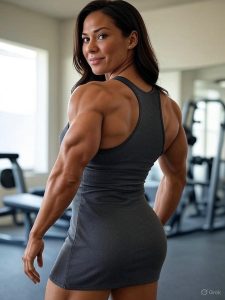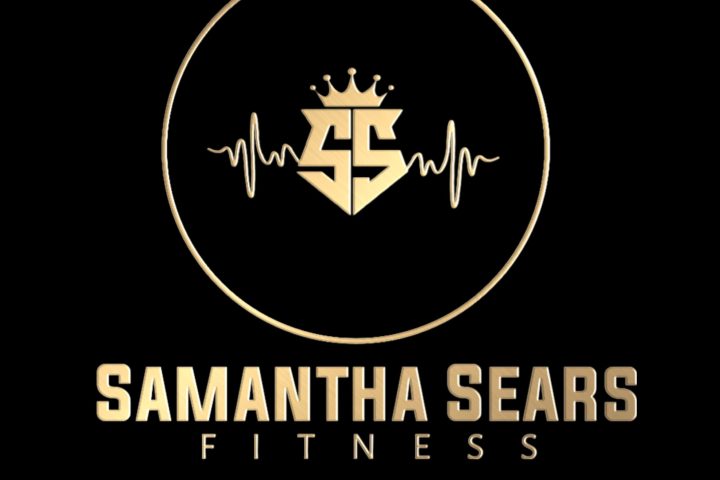

Summer is the season to show off your hard work—whether you’re rocking a swimsuit at the beach, a tank top dress at a barbecue, or a sleeveless top at a festival. A well-defined, strong back, shoulders, and arms not only enhance your appearance but also improve your posture, boost confidence, and support functional fitness. Achieving that “sexy, strong” look requires a strategic combination of targeted strength training, proper nutrition, recovery, and consistency. This comprehensive guide will walk you through the steps to sculpt your upper body for summer, focusing on the back, shoulders, and arms. We’ll cover the science of muscle growth, training principles, nutrition strategies, and lifestyle tips to help you look and feel your best. At the end, you’ll find a tailored workout plan to build those sexy, strong arms, shoulders, and back.
Understanding the Anatomy of a Sexy, Strong Upper Body
Before diving into the how-to, let’s break down the key muscle groups you’ll target for that summer-ready look:
-
Back Muscles:
-
Latissimus Dorsi (Lats): These large, wing-like muscles give your back width and a V-shaped taper, creating a defined silhouette in a swimsuit.
-
Trapezius (Traps): Located in the upper back and neck, the traps add definition and improve posture, making your shoulders look broader and stronger.
-
Rhomboids: Positioned between the shoulder blades, these muscles pull the scapulae together, enhancing back definition and posture.
-
Erector Spinae: These muscles run along the spine, supporting posture and stability during upper-body movements.
-
-
Shoulder Muscles:
-
Deltoids (Delts): Comprising the anterior (front), lateral (side), and posterior (rear) heads, the delts create rounded, capped shoulders that look great in tank tops.
-
Rotator Cuff: A group of smaller muscles that stabilize the shoulder joint, ensuring safe and effective movement during training.
-
-
Arm Muscles:
-
Biceps Brachii: Located on the front of the upper arm, the biceps create that coveted “peak” when flexed, adding definition to your arms.
-
Triceps Brachii: Making up the back of the upper arm, the triceps contribute to arm size and tone, eliminating any “jiggle” when you wave.
-
Forearm Muscles: These muscles add detail and strength to the lower arm, enhancing the overall aesthetic.
-
Building a sexy, strong upper body means targeting these muscles with a mix of hypertrophy (muscle growth) and strength training, while also focusing on fat loss to reveal definition.
Step 1: Training Principles for a Sexy, Strong Upper Body
To sculpt your back, shoulders, and arms, you’ll need a structured training plan that balances volume, intensity, and recovery. Below are the key principles to follow:
1. Prioritize Compound Movements
Compound exercises work multiple muscle groups at once, maximizing efficiency and building functional strength. For your upper body, focus on:
-
Pull-Ups/Chin-Ups: Target the lats, biceps, and traps while improving grip strength.
-
Deadlifts: Engage the entire posterior chain, including the lats, traps, and erector spinae.
-
Overhead Press: Build the delts, triceps, and traps while improving shoulder stability.
-
Bent-Over Rows: Target the lats, rhomboids, traps, and biceps for a defined back.
2. Incorporate Isolation Exercises
Isolation exercises target specific muscles to enhance definition and symmetry. Examples include:
-
Lateral Raises: Isolate the lateral delts for capped shoulders.
-
Rear Delt Flyes: Target the posterior delts for a rounded shoulder look.
-
Bicep Curls: Build the biceps for arm definition.
-
Tricep Dips: Tone the triceps for sleek, strong arms.
3. Use Progressive Overload
To grow muscle, you must progressively challenge your body by increasing weight, reps, or sets over time. For example:
-
Week 1: Dumbbell Shoulder Press, 10 lbs for 3 sets of 10 reps.
-
Week 4: Increase to 12 lbs for 3 sets of 12 reps.
4. Train with Proper Frequency
Aim to train each muscle group 2–3 times per week for optimal growth. A push/pull split or upper/lower split works well:
-
Push/Pull Split: Day 1 (Push: chest, shoulders, triceps), Day 2 (Pull: back, biceps), Day 3 (Rest or Legs), repeat.
-
Upper/Lower Split: Day 1 (Upper: back, shoulders, arms), Day 2 (Lower: legs), Day 3 (Rest), repeat.
5. Focus on Form and Range of Motion
Proper form ensures you’re targeting the right muscles and avoiding injury. For example:
-
During pull-ups, pull your chest toward the bar and avoid swinging.
-
In lateral raises, lift to shoulder height with a slight bend in the elbows to avoid shoulder strain.
6. Include Variety
Vary your exercises, rep ranges, and equipment (e.g., dumbbells, barbells, resistance bands) to prevent plateaus and keep training fun. For example, alternate between barbell rows and dumbbell rows each week.
Step 2: Nutrition for Muscle Growth and Definition
Training builds muscle, but nutrition determines how visible those muscles are. To achieve a sexy, strong look, you’ll need to balance muscle growth (hypertrophy) with fat loss. Here’s how:
1. Eat in a Slight Caloric Surplus or Maintenance
To build muscle, you need enough calories to support growth. Calculate your maintenance calories (the amount you need to maintain your current weight) and aim for:
-
Bulking: A surplus of 250–500 calories per day.
-
Recomp: Maintenance calories to build muscle while losing fat (ideal for beginners or those with higher body fat).
Use a macro calculator to determine your needs, but a general guideline is:
-
Protein: 0.8–1.2 g per pound of body weight (e.g., 120–180 g for a 150-lb person).
-
Carbs: 40–50% of total calories to fuel workouts.
-
Fats: 20–30% of total calories for hormone health.
2. Prioritize Protein
Protein is essential for muscle repair and growth. Aim for 20–40 g of protein per meal, spread across 4–5 meals/snacks. Good sources include:
-
Chicken breast, turkey, lean beef
-
Salmon, tuna, shrimp
-
Eggs, Greek yogurt, cottage cheese
-
Plant-based options: tofu, tempeh, lentils
3. Time Your Carbs
Carbs fuel your workouts and replenish glycogen stores. Eat most of your carbs around your training:
-
Pre-Workout: 30–60 g of carbs (e.g., oatmeal with berries) 1–2 hours before training.
-
Post-Workout: 40–80 g of carbs (e.g., rice with chicken) to aid recovery.
4. Include Healthy Fats
Fats support hormone production, including testosterone, which aids muscle growth. Include:
-
Avocados, nuts, seeds
-
Olive oil, coconut oil
-
Fatty fish (salmon, mackerel)
5. Stay Hydrated
Dehydration can impair performance and recovery. Aim for 0.5–1 oz of water per pound of body weight daily (e.g., 75–150 oz for a 150-lb person). Add electrolytes during intense training to replenish sodium and potassium.
6. Consider a Slight Deficit for Definition
If you’re carrying excess body fat, a slight caloric deficit (250–500 calories below maintenance) can help reveal muscle definition without sacrificing strength. Pair this with high protein intake to preserve muscle mass.
Step 3: Fat Loss for Muscle Definition
While building muscle is key, reducing body fat will make your back, shoulders, and arms pop in a swimsuit. Here’s how to lean out without losing muscle:
1. Incorporate Cardio Strategically
Cardio burns calories but can also burn muscle if overdone. Aim for:
-
Low-Intensity Steady-State (LISS): 20–30 minutes of walking or cycling, 2–3 times per week.
-
High-Intensity Interval Training (HIIT): 15–20 minutes of sprints or circuits (e.g., 30 seconds sprint, 60 seconds walk, repeat), 1–2 times per week.
2. Increase NEAT
Non-Exercise Activity Thermogenesis (NEAT) includes daily activities like walking, fidgeting, or taking the stairs. Increasing NEAT burns calories without taxing recovery. Aim for 8,000–10,000 steps per day.
3. Monitor Progress
Track your body fat percentage (using calipers or a scale) and measurements (e.g., shoulder circumference, arm circumference) every 2–4 weeks. Adjust your calories if progress stalls:
-
If you’re not losing fat, reduce calories by 100–200 per day.
-
If you’re losing strength, increase carbs or protein.
Step 4: Recovery and Lifestyle Tips
Muscle growth happens during recovery, not in the gym. Optimize your recovery with these strategies:
1. Sleep 7–9 Hours Per Night
Sleep is when your body releases growth hormone and repairs muscle tissue. Poor sleep increases cortisol (a stress hormone), which can hinder muscle growth and fat loss. Tips:
-
Stick to a consistent sleep schedule.
-
Avoid screens 1 hour before bed.
-
Keep your room cool and dark.
2. Manage Stress
Chronic stress elevates cortisol, which can break down muscle and increase fat storage. Practice stress management:
-
Meditation or deep breathing (5–10 minutes daily)
-
Yoga or stretching
-
Spending time in nature
3. Use Active Recovery
On rest days, engage in light activities to promote blood flow and reduce soreness:
-
20–30 minutes of walking
-
Foam rolling or stretching
-
Light yoga or mobility work
4. Stretch and Mobilize
Tight shoulders or a stiff back can limit your range of motion and increase injury risk. Incorporate:
-
Shoulder Mobility: Arm circles, shoulder dislocations with a band
-
Back Mobility: Cat-cow stretches, thoracic spine rotations
-
Arm Stretches: Tricep stretch, bicep stretch
Step 5: Consistency and Mindset
Achieving a sexy, strong upper body takes time—typically 8–12 weeks of consistent effort to see noticeable changes. Here’s how to stay on track:
1. Set Realistic Goals
Aim for measurable, achievable goals, such as:
-
Increase pull-ups from 3 to 8 reps in 8 weeks.
-
Add 1 inch to your shoulder circumference in 12 weeks.
-
Reduce body fat by 2% in 10 weeks.
2. Track Your Workouts
Use a notebook or app to log your exercises, weights, reps, and sets. This helps you monitor progress and apply progressive overload.
3. Take Progress Photos
Photos show changes that the scale might not. Take front, side, and back photos every 4 weeks in similar lighting and poses.
4. Stay Motivated
-
Find a workout buddy for accountability.
-
Reward yourself with new workout gear or a spa day after hitting milestones.
-
Visualize how you’ll feel in that swimsuit or tank top dress.
Common Mistakes to Avoid
Here are pitfalls that can derail your progress and how to avoid them:
-
Overtraining: Training too often without rest can lead to fatigue and injury. Solution: Take at least 1–2 rest days per week and listen to your body.
-
Neglecting Nutrition: Undereating or overeating can stall muscle growth or fat loss. Solution: Track your macros and adjust as needed.
-
Skipping Warm-Ups: Jumping into heavy lifts without warming up increases injury risk. Solution: Spend 5–10 minutes on dynamic stretches or light cardio.
-
Focusing Only on Aesthetics: Ignoring strength and function can lead to imbalances. Solution: Include compound lifts for overall development.
-
Impatience: Expecting results in a week is unrealistic. Solution: Focus on small wins (e.g., lifting heavier, feeling stronger) to stay motivated.
The Role of Posture in a Sexy Upper Body
A strong back and shoulders do more than look good—they improve your posture, which enhances your overall appearance. Slouching hides your muscle definition and makes you look less confident. Here’s how to improve posture:
-
Strengthen Your Upper Back: Exercises like rows and face pulls target the rhomboids and traps, pulling your shoulders back.
-
Stretch Your Chest: Tight chest muscles pull your shoulders forward. Do doorway chest stretches daily.
-
Engage Your Core: A strong core supports your spine. Add planks or dead bugs to your routine.
-
Be Mindful: Stand tall with shoulders back and down, chest open, and chin slightly tucked.
Good posture makes your back look wider, shoulders broader, and arms more defined—perfect for that swimsuit or tank top dress.
Supplements for Support (Optional)
While not necessary, certain supplements can support your goals:
-
Protein Powder: Helps meet protein needs (e.g., post-workout shake).
-
Creatine Monohydrate: Increases strength and muscle volume (5 g daily).
-
Branched-Chain Amino Acids (BCAAs): May aid recovery during intense training.
-
Omega-3 Fish Oil: Reduces inflammation and supports joint health.
Always consult a healthcare professional before starting supplements.
Sexy, Strong Upper Body Workout Plan
Now that you have the foundation, here’s a targeted workout to build your back, shoulders, and arms. This workout is designed for intermediate lifters (with at least 6 months of training experience) and can be done 2–3 times per week as part of a broader program. It uses dumbbells, a barbell, and a pull-up bar—equipment commonly found in most gyms.
Workout Overview
-
Duration: 45–60 minutes
-
Equipment: Dumbbell set, barbell, pull-up bar, bench
-
Warm-Up: 5–10 minutes of dynamic stretches (arm circles, band pull-aparts, light cardio)
-
Cool-Down: 5–10 minutes of static stretches (tricep stretch, child’s pose, chest opener)
Workout Structure
-
Perform 3–4 sets of each exercise.
-
Rest 60–90 seconds between sets.
-
Use a weight that challenges you but allows proper form.
Exercises
1. Pull-Ups (Lats, Biceps, Traps)
-
Reps: 8–12 (use a band or do negatives if needed)
-
How-To: Hang from a pull-up bar with an overhand grip, shoulder-width apart. Pull your chest toward the bar, squeezing your lats at the top. Lower slowly.
-
Tip: If you can’t do pull-ups, do inverted rows under a bar.
2. Barbell Overhead Press (Delts, Triceps, Traps)
-
Reps: 8–10
-
How-To: Stand with feet shoulder-width apart, barbell at collarbone height. Press the bar overhead until arms are fully extended, keeping your core tight. Lower back to the starting position.
-
Tip: Avoid arching your lower back—engage your glutes to stay stable.
3. Dumbbell Bent-Over Rows (Lats, Rhomboids, Biceps)
-
Reps: 10–12 per arm
-
How-To: Hinge at the hips, keeping your back flat, with a dumbbell in each hand. Pull the weights toward your hips, squeezing your shoulder blades together. Lower slowly.
-
Tip: Keep your neck neutral to avoid strain.
4. Dumbbell Lateral Raises (Lateral Delts)
-
Reps: 12–15
-
How-To: Stand with feet hip-width apart, a light dumbbell in each hand. With a slight bend in the elbows, raise your arms to shoulder height, then lower slowly.
-
Tip: Avoid swinging—use controlled movements.
5. Dumbbell Rear Delt Flyes (Posterior Delts, Rhomboids)
-
Reps: 12–15
-
How-To: Hinge at the hips, holding light dumbbells. With a slight bend in the elbows, lift your arms out to the sides, squeezing your upper back at the top. Lower slowly.
-
Tip: Focus on the rear delts, not the traps—keep the movement slow.
6. Dumbbell Bicep Curls (Biceps)
-
Reps: 10–12
-
How-To: Stand with feet hip-width apart, a dumbbell in each hand, palms facing forward. Curl the weights toward your shoulders, squeezing your biceps at the top. Lower slowly.
-
Tip: Keep your elbows tucked to your sides to isolate the biceps.
7. Tricep Dips (Triceps)
-
Reps: 12–15 (use a bench or parallel bars)
-
How-To: Position your hands on a bench, legs extended in front of you. Lower your body by bending your elbows to a 90-degree angle, then press back up.
-
Tip Hawkins: If using parallel bars, keep your body straight and lower until your arms are at a 90-degree angle, then press up.
-
Tip: Keep your shoulders down, away from your ears.
Progression Tips
-
Beginners: Start with lighter weights and focus on form. Do 3 sets of 10 reps.
-
Advanced: Increase weight each week, aiming for 4 sets of 8–12 reps. Add a drop set on the final set of bicep curls and tricep dips (reduce weight and do 8 more reps).
Sample Schedule
-
Day 1: Upper Body Workout (above)
-
Day 2: Lower Body (e.g., squats, lunges)
-
Day 3: Rest or Active Recovery (light cardio, stretching)
-
Day 4: Upper Body Workout (above)
-
Day 5: Lower Body
-
Day 6: Rest or Active Recovery
-
Day 7: Upper Body Workout (above)
Achieving a sexy, strong back, shoulders, and arms for summer is a journey that combines smart training, proper nutrition, fat loss, recovery, and consistency. By focusing on compound and isolation exercises, progressively overloading, and fueling your body with adequate protein, carbs, and fats, you can build muscle and reveal definition. Incorporate cardio and NEAT to lean out, prioritize recovery with sleep and stress management, and stay consistent with your workouts and goals. The included workout plan targets your back, shoulders, and arms with effective exercises that will help you look and feel confident in a swimsuit, tank top dress, or any summer outfit. Start today, stay committed, and get ready to turn heads this summer!
